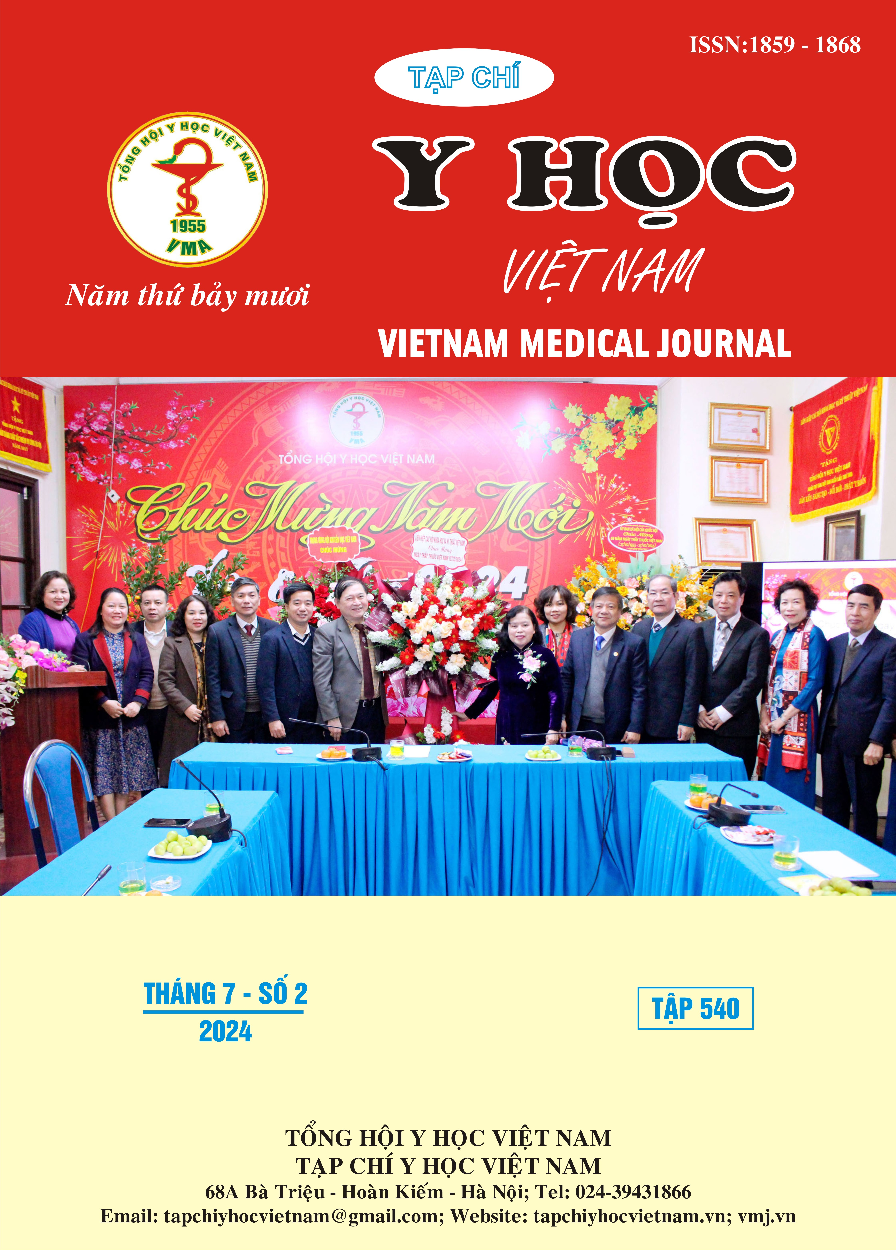STUDY ON THE SITUATION AND FACTORS RELATED TO TREATMENT ADHERENCE AND EVALUATION OF THE EFFECTIVENESS OF HEALTH EDUCATION COMMUNICATION INTERVENTIONS IN OUTPATIENTS WITH TYPE 2 DIABETES AT BAU BANG DISTRICT HEALTH CENTER, BINH DUONG PROVINCE, 2023 - 2024
Main Article Content
Abstract
Background: Diabetes mellitus is a group of metabolic diseases characterized by late diagnosis and high treatment costs, leading to many dangerous complications. The goal of diabetes treatment is to control blood glucose levels within allowable limits to minimize the risk of complications. Adherence to treatment is a crucial factor in disease management.Objectives: 1) Determining the prevalence of treatment adherence in outpatients with type 2 diabetes at Bàu Bàng District Health Center, Bình Dương Province, in 2023-2024. 2) Identifying factors related to treatment adherence in these patients. 3) Evaluating the effectiveness of health education communication interventions on treatment adherence in outpatients with type 2 diabetes. Materials and methods: A descriptive cross-sectional study combined with non-controlled intervention was conducted on 283 diabetes patients aged 18 and higher, who were receiving outpatient treatment at Bau Bang District Health Center. Results: The overall treatment adherence prevalence e among patients was 22.3%, with adherence to medication at 60.1%, adherence to physical activity at 55.1%, adherence to nutrition at 25.1%, and adherence to blood glucose monitoring and follow-up visits at 58.7%. Factors related to overall treatment adherence included age under 60, urban residence, education level of secondary school or higher, disease duration of less than 1 year, treatment duration of less than 1 year, and correct knowledge about diabetes. After a 3-month intervention involving in communication with 220 non-adherent patients, treatment adherence prevalence improved: overall adherence 10.9%, medication adherence to 56.4% (p=0.105, efficacy: 15.9%), physical activity adherence to 58.2% (p<0.001, efficacy: 37.6%), nutrition adherence to 38.2% (p<0.001, efficacy: 950%), and adherence to blood glucose monitoring and follow-up visits to 84.5% (p<0.001, efficacy: 80.6%). The fasting blood glucose index achieved the target in 33.6% of patients (p<0.001, efficacy: 55.4%). Conclusions: Health education communication is effective in improving treatment adherence and helps control blood glucose levels in diabetes patients.
Article Details
Keywords
treatment adherence, related factors, effectiveness, intervention, communication
References
2. Nguyễn Thị Xuân Ái, Trương Thụy Kiều Oanh, Nguyễn Văn Tập (2015), "Tuân thủ điều trị đái tháo đường của người bệnh tại khoa nội tim mạch - nội tiết bệnh viện Bình Thạnh".
3. Bộ Y tế (2014), Hướng dẫn chẩn đoán và điều trị bệnh nội tiết-chuyển hoá, Nhà xuất bản Y học.
4. Bộ Y tế (2020), Hướng dẫn chẩn đoán và điều trị đái tháo đường típ 2, Hà Nội.
5. Đỗ Văn Doanh (2016), "Thực trạng tuân thủ điều trịcủa người bệnh đái tháo đường týp 2 ngoại trú tại bệnh viện tỉnh Quảng Ninh năm 2016", Tạp chí Khoa học Điều dưỡng, 2(2), 14-21.


